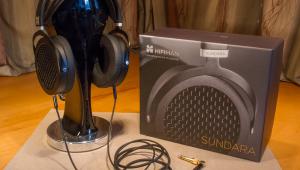| Columns Retired Columns & Blogs |
64 Audio A18t In-Ear Monitor

This story originally appeared at InnerFidelity.com
64 Audio has a special place in my heart.
Perhaps that's an odd way of introducing a review, as it makes me sound totally biased, but allow me to explain.
My first experience with the company – which was called 1964 Ears back then – involved one of their very first designs.
It was a triple-driver custom in-ear monitor which I purchased as a regular customer and subsequently reviewed – just for fun – way back in 2010. The established competition (mainly Ultimate Ears and Westone) wanted nearly $1,000 for custom-molded triple-driver models, while 1964 Ears sold their offering for less than half that price – with very little sonic compromise involved.
Two years later, the company overhauled their entire lineup, with the new V3 model taking the place of their original triple-driver offering. I purchased and reviewed the V3 (again, just for the fun of it), finding that it improved on its predecessor in nearly every aspect. Now the company wasn't just keeping up with the more expensive and well established competition, but actually surpassing them. In a highly competitive CIEM market, the V3 managed to stand out as a "budget" champion, while notably keeping the same sub-$500 USD price tag as its predecessor.
Years have past since then. The headphone industry has grown rapidly, and the "niche" custom IEM market in particular has really exploded. There are dozens of brands out there which didn't exist when 1964 Ears first launched at the turn of the decade. 1964 Ears also grew during that time, moving to bigger and better facilities on more than one occasion to keep up with customer demand. They also rebranded to 64 Audio, which I feel is a definite improvement over the original name.
So why do they hold a special place in my heart? Well, over all these years, my collection has grown to roughly thirty sets of custom IEMs. Some of these were sent to me for review purposes, while many were purchased for my own use. I've got dirt-cheap models that sold for under $200, bespoke hand-carved wood designs costing multiple thousands, and quite a few in between those extremes. But guess which pair gets the most consistent use?
Yep, the old 1964 Ears/64 Audio V3. It's quite possibly the best sub-$450 USD I've ever spent on an audio product.
I wear them to the gym on a regular basis. I throw them in a locker, I drop them, I snag the cable on the weight racks, and I rarely give them a proper sound-tube cleaning. I drive them straight from a Samsung Galaxy S8, or via Noble Audio BTS Bluetooth adapter, or a Sony NW-ZX2, or occasionally at home using a $20,000 USD audio system. The V3 never complains, never acts up, and never sounds anything less than impressive. It's my sonic oasis, the in-ear equivalent of a venerable Sennheiser HD650 – with which it happens to share a very similar tonal balance.
And that is why 64 Audio occupies a special place in my audio hierarchy. But make no mistake; that's a past accomplishment. There's nothing saying any future products can't go downhill. In fact, having such a deep connection with a prior model arguably puts that much more pressure on all future designs.
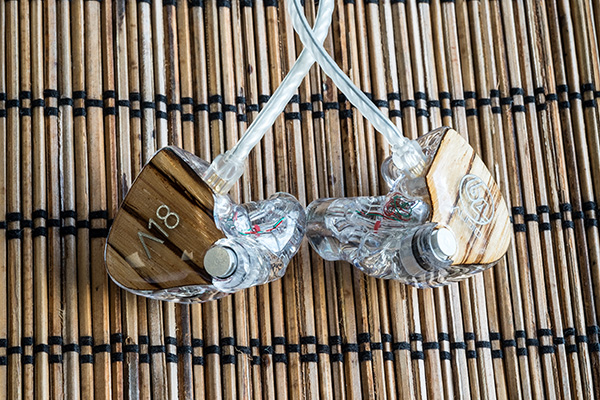
This may be the reason why I sat on the sidelines for years, as 64 Audio came out with one new model after another. But when I saw their A18t ($2,999 USD) sporting an unbelievable 18 drivers-per-side, using proprietary balanced armatures and other patent-pending technology, I figured the time was right. Would the company earn my respect once again?
Let's find out.
The A18t 64 Audio A18t is the top model in 64 Audio's custom series. It uses 18 balanced armature drivers per side to cover the full sonic spectrum, including a proprietary "TIA" driver covering high-frequencies. TIA stands for Tubeless In-ear Audio and it offers a new take on the familiar balanced-armature design. These unique TIA drivers reside at the very tip of each earpiece, protected by a metallic mesh screen. The theory is that by firing directly into the ear from as close as physically possible, the TIA driver avoids distortion and resonances introduced by the tubes that would otherwise be used with traditional balanced armatures. I find it interesting that 64 Audio talks up this new technology yet doesn't use it for the rest of their driver array – perhaps there are trade-offs involved that make it only worthwhile for the high-frequency unit.
Of the remaining "standard" drivers, eight are tasked with low-frequency reproduction, eight for midrange, one for upper-mids, and the TIA driver on highs as previously mentioned. This four-way configuration is theoretically less advanced than some of the competition – most notably the eight-way crossover used by Empire Ears in their excellent Zeus XR which has been my reference for a while now. Will that be a factor in the resulting sound? We'll see.
Another interesting bit of proprietary technology used by 64 Audio is their Apex system. Apex stands for Air Pressure Exchange. Through the use of special ported inserts, the system aims to relieve pneumatic pressure which builds-up in the ear canal due to the sealed nature of a custom IEM. The end result is supposedly safer and less fatiguing on your ear drums, with the added benefit of improved sound quality. The proprietary venting system accomplishes this task without compromising much in terms of isolation – depending on the Apex module used, we still get 15 or 20dB worth of isolation. That's less than a traditional sealed custom IEM, but on par or better than most universal solutions using typical silicone tips.
The elephant in the room?
64 Audio initially licensed a similar technology called Adel, from a 3rd party named Asius Technologies. Several years into their venture, things apparently went sour causing 64 Audio to branch out with their own design instead. Interestingly enough, Asius then switched over to work with Empire Ears – an obvious competitor for 64 Audio. That partnership lasted a few years and yielded seemingly great results... yet I notice the latest batch of Empire Ears products is not available with Adel modules. I have yet to see any official word about Empire Ears severing ties with Asius, so I can't say for sure where things really stand. But the fact that the entire lineup omits the very popular Adel option seems to at least hint that the two are no longer working together.
Also note that InnerFidelity covered the original Adel concept back in the day and found it somewhat questionable in terms of backing up the claims of "safer listening". I've also spoken to several Audiologists who were generally quite skeptical about the idea. That said, anecdotal evidence from a few different friends is that the Adel/Apex systems do in fact offer tinnitus relief during lengthy jam sessions. Placebo? Maybe. In any case, I personally feel these systems make a significant contribution to the resulting sound quality. So, while I'd like to see more definitive scientific evidence to back up the safety claims, I do feel these systems are nonetheless worthwhile, even if solely for their sonic properties.
But let's get back to 64 Audio. The company has a useful "Designer" page allowing users to play with different build options. From an entry level dual-driver model with no frills, to a fully loaded A18t with custom flourishes, it's all available on the site for preview and pricing. Fancy faceplates will cost a bit extra, as is the standard with custom IEMs. I got mine with the striking Zebra Wood – one of a dozen available wood faceplates – and the final product looks absolutely stunning.
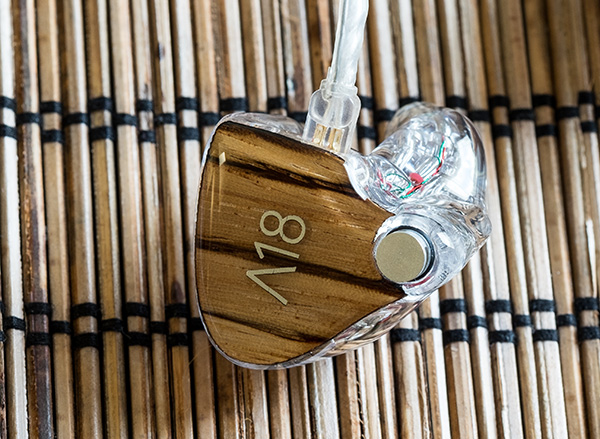
Worth noting - the company uses 3D printing technology to build the shells. This is different from the former (and more traditional) process, and supposedly provides a more precise, consistent fit. The drawback is that only five shell colour choices exist, as opposed to the old method which allowed for a virtually unlimited colour palate. Still, veteran competitor Ultimate Ears also does 3D shell printing and at this time only offers a single shell option (clear). So 64 Audio is ahead on that front.
Build quality on my set is about as close to perfection as I've seen from a custom IEM. There are no air bubbles or other anomalies to be found, and despite the absurd complexity of cramming 18 drivers into such a tiny shell, it all appears surprisingly tidy.
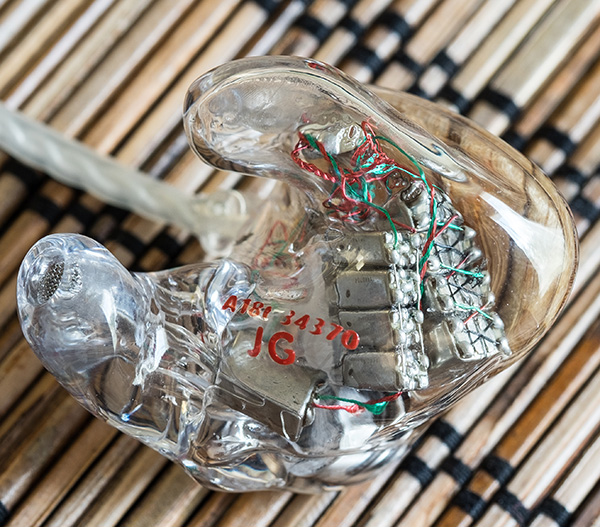
Lastly, I have to mention the unique storage case, which is also 3D printed. It's roughly the same size as the usual "Pelican" style case that many other brands bundle with their custom IEMs. Inside, it's a whole different animal, with customized pathways for cable routing, cutouts for holding spare Apex modules, and separate, lightly padded chambers for the IEMs themselves. It's actually quite brilliant - assuming you're willing to spend the extra 45 seconds to properly stow the IEMs after each listen. 64 Audio even offers customization for a small fee. Simple art is possible, though I suspect some images may be too complex to implement. All in all it's nice to see a company innovate in a seemingly mundane area such as this.
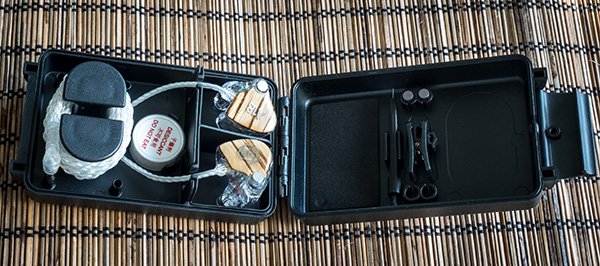
- Log in or register to post comments















